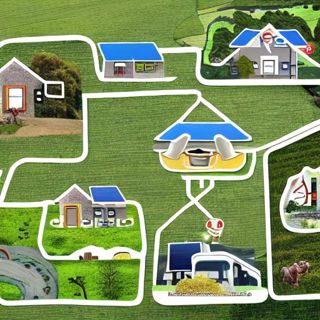Positive Benefits of Implementing Smart Technology in Rural Environments

The rapid advancement of technology has transformed the way we live and work, and this transformation is not limited to urban areas. Rural environments, once characterized by their simplicity and lack of technological integration, are now experiencing the positive impacts of smart technology adoption. This essay explores the myriad positive benefits of implementing smart technology in rural areas, including enhanced agricultural practices, improved healthcare access, better education, economic growth, and overall quality of life.
I. Enhanced Agricultural Practices
1.1 Precision Farming
One of the most significant benefits of introducing smart technology to rural areas is the enhancement of agricultural practices. Precision farming techniques, enabled by smart sensors, drones, and data analytics, allow farmers to optimize crop production. They can monitor soil health, weather conditions, and crop growth in real-time, leading to increased yields and reduced resource wastage.
1.2 Irrigation Management
Smart technology can also significantly improve water management in rural agriculture. Automated irrigation systems can adjust water usage based on soil moisture levels, weather forecasts, and crop needs. This not only conserves water but also reduces the operational costs for farmers.
II. Improved Healthcare Access
2.1 Telemedicine
In rural areas with limited access to healthcare facilities, telemedicine powered by smart technology can be a game-changer. Patients can consult with healthcare professionals remotely, receive diagnoses, and even access specialized care that might not be available locally. This improves healthcare access and outcomes in underserved regions.
2.2 Health Monitoring
Wearable devices and remote monitoring systems enable individuals in rural areas to track their health conditions continuously. This proactive approach to healthcare can lead to early detection of health issues, timely interventions, and improved overall well-being.
III. Enhanced Education
3.1 E-Learning
Smart technology facilitates e-learning, allowing students in rural areas to access educational resources beyond their physical location. Online courses, educational apps, and virtual classrooms can bridge the education gap and provide quality learning opportunities to rural students.
3.2 Teacher Support
Smart technology also aids teachers in rural schools by providing resources for lesson planning, interactive teaching tools, and data analytics to track student progress. This support can lead to more effective teaching and better learning outcomes.
IV. Economic Growth
4.1 Job Creation
The introduction of smart technology in rural areas often leads to job creation. The setup and maintenance of technology infrastructure, as well as the development of digital skills, can generate employment opportunities within the community.
4.2 Access to Markets
Smart technology can connect rural businesses and entrepreneurs to larger markets. E-commerce platforms, digital marketing, and online payment systems enable rural businesses to reach a wider customer base, boosting sales and revenue.
V. Quality of Life
5.1 Improved Infrastructure
Smart technology initiatives often require the development of essential infrastructure, such as high-speed internet access and reliable power supply. These improvements benefit not only technology implementation but also the overall quality of life in rural areas.
5.2 Safety and Security
Smart technology can enhance safety and security in rural communities. Surveillance systems, emergency alert systems, and smart lighting can improve public safety and response times in emergencies.
VI. Sustainable Practices
6.1 Energy Efficiency
Smart technology can promote sustainability by improving energy efficiency. Smart grids and energy management systems can help rural areas reduce energy consumption and reliance on fossil fuels.
6.2 Environmental Monitoring
Rural environments often include valuable natural resources. Smart sensors and monitoring systems can help protect these resources by providing real-time data on air and water quality, wildlife conservation, and ecosystem health.
VII. Community Engagement
7.1 Participatory Governance
Smart technology can facilitate community engagement in decision-making processes. Online platforms and mobile apps can enable residents to voice their opinions, participate in local governance, and stay informed about community developments.
7.2 Social Connectivity
In rural areas, smart technology can reduce social isolation by enabling communication and social networking. This connectivity can help combat feelings of loneliness and improve mental well-being.
Conclusion
The implementation of smart technology in rural environments brings a multitude of positive benefits that touch every aspect of community life. From enhancing agricultural productivity and healthcare access to improving education, boosting economic growth, and elevating overall quality of life, smart technology is a powerful tool for rural development. Governments, organizations, and communities should recognize the potential of smart technology and work together to bridge the digital divide, ensuring that rural areas can fully harness the transformative power of technology for the betterment of their residents and the sustainable growth of their communities.
Follow Gabriel Nainggolan to stay updated on their latest posts!
0 comments
Be the first to comment!
This post is waiting for your feedback.
Share your thoughts and join the conversation.
